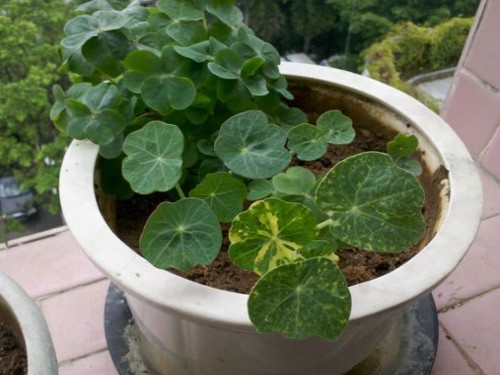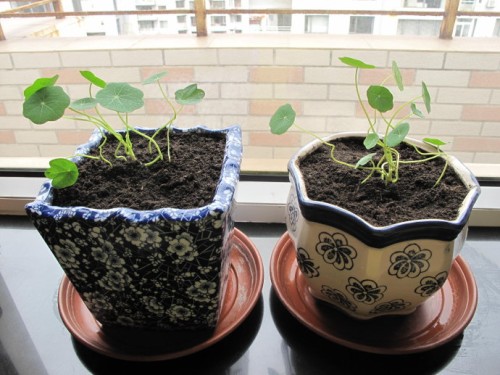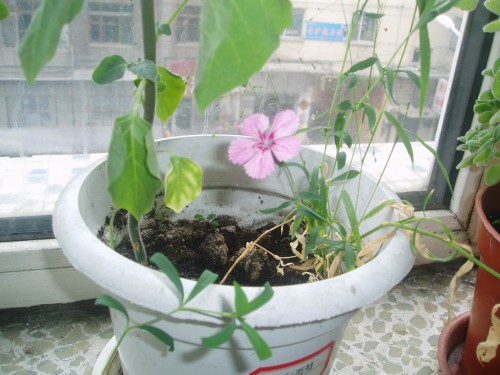Breeding methods of Clematis paniculata
Nelumbo nucifera is a perennial trailing herbaceous flower of the genus Clematis of the family Nelumbo nucifera. Stem fleshy hollow, grayish green, simple leaves alternate, long petiolate, peltate-rounded entire undulate. The flower ends on a symmetrical slender pedicel drawn from leaf axils, with yellow, red, orange, purple, milky white and complex colors. The fruit is pale green, the surface is ribbed, and the seeds are large. The main varieties are erect dwarf species and double species. The florescence is usually in summer and autumn. Due to the senescence and yellowing of the middle and lower leaves layer by layer every year, the old plant does not affect its appearance, so it makes more annual or biennial grass flowers, which can bloom all the year round in greenhouse cultivation.

Handelia lanceolata always has fat leaves and beautiful flowers, with special colors, and when it opens, it is very brilliant and spectacular, so many people like to plant it in pots and decorate places such as balconies and windowsills at home. The effect of embellishment is very good. Below, I will take you to understand the breeding methods of Handellia.
The methods of sowing and cutting are often used in the breeding of Clematis paniculata.
1. Sowing and reproduction:
The seeds were soaked in 40-45 ℃ warm water for 24 hours before sowing and kept for 18-20 ℃ after sowing. The seedlings could emerge after 7-10 days, and the seeds were planted in the planting pot in May of the following year. The details are as follows:
It can be carried out in both spring and autumn. Soak it in warm water for 1 day before sowing and sow it in fine soil after sieving and soil mixed with rice chaff ash at the ratio of 2:1. The suitable sowing temperature is 18-23 ℃, and the seedlings can emerge in about 1 week. When 3 true leaves are grown, the seedlings can be transplanted with a distance of 10 cm, and planted in a 18 cm basin one month later. 3 parts of garden soil, 2 parts of rotten sawdust or vinegar residue, 1 part of rice chaff ash and 0.5 part of loam mixed with chicken manure or cake residue can be used in basin soil.
2. Cutting propagation:
The cuttings of Clematis paniculata are generally carried out from April to June, and the tender stems are selected as cuttings, the lower leaves are removed, shaded and humidity is maintained, and roots can take root in 2-3 weeks. With the growth of stem vines, bamboo should be used in time to set up the stand and bind the branches. Topdressing once every 10-15 days, sufficient moisture and high air humidity should be maintained throughout the growth period.
The top tip of the plant can also be taken from June to July and cut in loam soil with half of garden soil and rice chaff ash to irrigate enough water, shade and maintain ventilation and air humidity. It can take root after 2-3 weeks and can be planted after 40 days.
Note:
The main results are as follows: 1. The sowing and reproduction of Handelia lanceolata can be divided into spring sowing and autumn sowing, the spring sowing has broad leaves, slender stem nodes, less flowering than autumn sowing, short flowering period, less seed setting, while autumn sowing has thick leaves, stout branches, compact plant type, short stem nodes, more flowering, long single flowering period and full seeds. Therefore, in order to keep the plant robust, we must use autumn seeds to sow seeds.
2. Transplanting and planting are easy to become "killers" for novice growers. Here is a method: first put less than 1/2 soil in the 18cm basin, then put the seeds exposed to the tip of the bud under the soil, wait for cotyledons to open and add 1cm soil, and then add 1cm soil after the true leaves grow, and then gradually fill the soil until the shoulder of the plant, which can prevent lodging due to plant overgrowth and control water and fertilizer.
Each flower has eight stamens and one pistil, of which eight stamens do not mature at the same time. It is not until all the pollen is spread that the pistil matures and extends to the trumpet of the flower.
Time: 2019-06-10 Click:
- Prev

Sowing diary and climbing frame pictures of Nelumbo nucifera
Clematis is an annual or perennial climbing succulent herb. Stem slender, fleshy hollow, smooth and glabrous. Leaves long-stalked, round, peltate, shaped like lotus leaves. The flowers are yellow or orange, with a sweet taste and can blossom all the year round under suitable climate conditions. The fragrance is sweet and the color is bright.
- Next

Propagation method of Dianthus chinensis
When it comes to carnation, not many people know about it, but when it comes to carnations, people are more familiar with it. In fact, the carnation we often talk about includes Chinese carnation, American carnation, also known as colorful carnation, and carnation, which is often referred to as carnation, Zhai Mai and so on.
Related
- Fuxing push coffee new agricultural production and marketing class: lack of small-scale processing plants
- Jujube rice field leisure farm deep ploughing Yilan for five years to create a space for organic food and play
- Nongyu Farm-A trial of organic papaya for brave women with advanced technology
- Four points for attention in the prevention and control of diseases and insect pests of edible fungi
- How to add nutrient solution to Edible Fungi
- Is there any good way to control edible fungus mites?
- Open Inoculation Technology of Edible Fungi
- Is there any clever way to use fertilizer for edible fungus in winter?
- What agents are used to kill the pathogens of edible fungi in the mushroom shed?
- Rapid drying of Edible Fungi

